Brand Narrative Assessment (eng)

The benefits of being a Brand
The brand generates value and higher performance in the markets, but not just that.
It motivates the organization and people, reassures stakeholders and investors, guides consumer expectations, consolidates customer loyalty, strengthens appeal to prospects, enables premium pricing, etc.
For this reason, it is necessary to think, plan and act a brand strategy, not only a strategy regarding the offer, product, sales, etc.
A brand strategy is essential in order not to end up crushed in the price competition.
A fundamental part of the brand strategy is its narration, to all stakeholders, i.e. the narrative strategy.
The question that follows is: how do you set up a brand narrative strategy? You need a clear, strong, and valid vision.
We took inspiration from the Wave model, developed by Alberto De Martini, a well-known Italian advertising executive and current CEO of Conic (for further information we suggest De Martini’s book that you can find in the reading reference below).
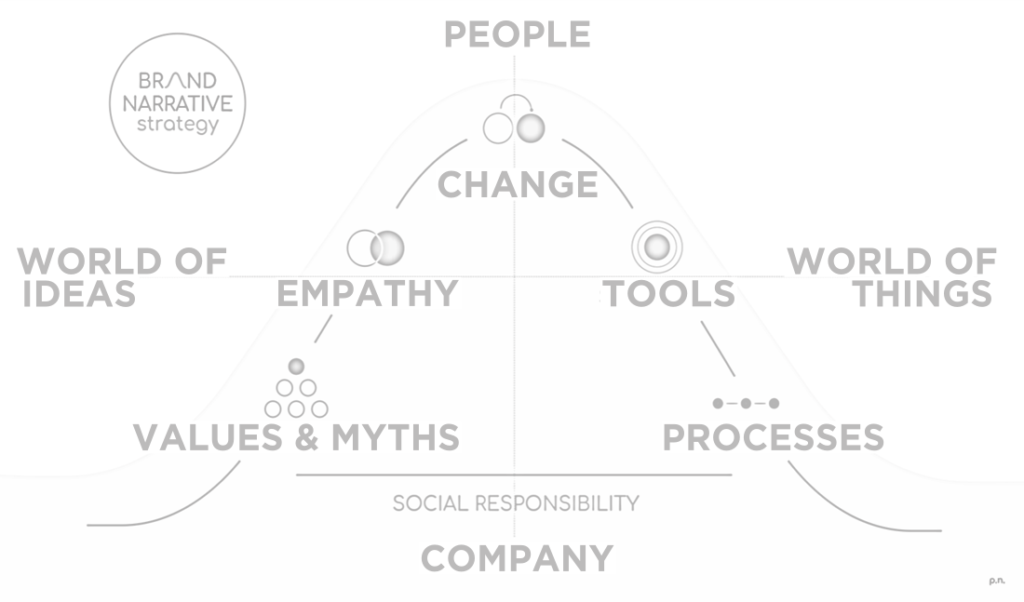
Successful brand narratives have the structure of ideologies
All brands that have managed to become great have used the same narrative structure, the one that has characterized the great stories of humanity, in every age, among every people: ideologies.
The strength of these narratives is confirmed by their ability to mobilize people, resources, form large organizations, renew, promote and inspire change for a long time.
All of these narratives address the same topics, coherently connecting them, along the same narrative path of which each communication action is a part.
Brand storytelling helps the whole company, not just communications.
Ideologies have common traits and components (diagram above).
The founding fathers, inspired by great values, were able to dialogue and empathize with some social groups to whom they promised a major change to accomplish with a certain organizational form and actions.
But how good is the current brand strategy, and how can it be improved? That’s why you need an assessment and strategic planning tool.
A new model of Brand Assessment is needed
We studied the different models of brand research (here is a review of scientific research updated in 2015).
Sophisticated commercial and academic models try to approach financial approaches by focusing on techniques and statistics.
Many we have also used or seen at work in professional experiences.
Current brand analyses are not sufficiently useful to marketing and communications decision-makers:
- they do not have an organized structure consistent with the brand’s narrative strategy;
- they give much space to the product as if the brand is only a combination of products;
- they evade fundamental questions that can generate a great value by going more in-depth (such as the meaning and purpose for which a brand exists);
- indicators (such as salience, relevance, leadership, strength, etc.) “measure” the goals but do not specify what elements need to be tackled;
- they tend to be only lists of characteristics (of image) even if in order of priority;
- they speak the language of the analyst, not the decision-maker;
- they are statistically light and do not help organize the budget on the different targets/messages;
- they do not guide meetings towards shared decisions;
- They leave much room for interpretation and the role of the professional/interpreter.
Brand Narrative Assessment to set the brand strategy
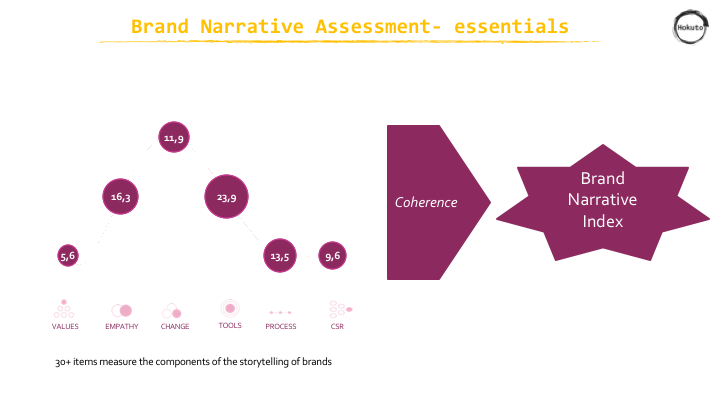
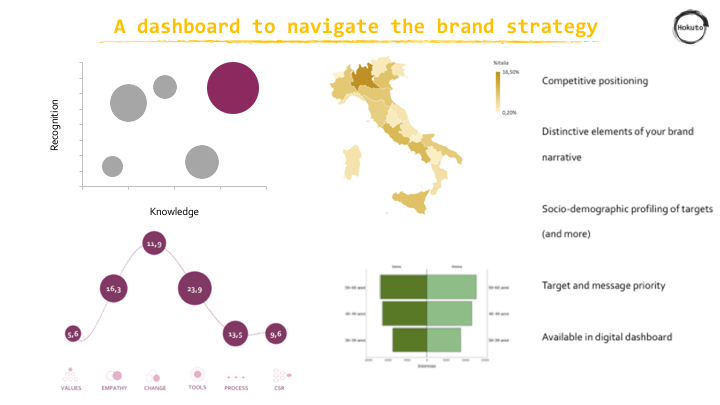
The power of Brand Narrative Assessment
The BNA is the market innovation that is needed:
- it measures and re-composes the core elements of the brand narrative and takes into account their connections;
- it traces the narrative structure of the brand;
- it is designed for those who need to communicate and develop a brand strategy.
It is tailored to engage all key stakeholders:
- management
- employees, collaborators, and talent to be attracted
- customers and prospects
- suppliers
- influencers and communicators
- and more…
It provides:
- strategic support and operational tools;
- a valid general outline cross-sector, cross country, cross-time combined with localizations and contextualizations;
- a simple description to advanced machine learning-based statistical models to aid operational decision making.
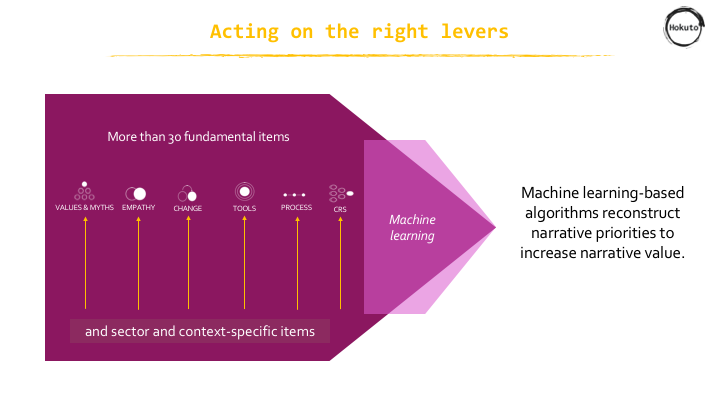
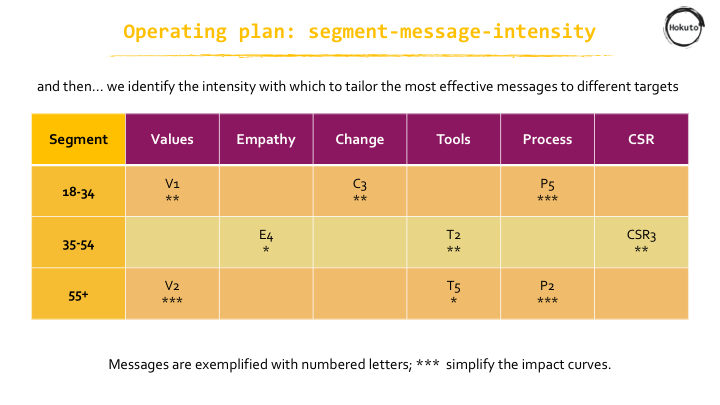
BNA Benefits
- Comprehensible – it speaks the language of marketing, not research
- Comprehensive – it includes the elements that explain the effectiveness of the brand strategy
- Comparative – each study is an area-specific analysis.
It is useful and pragmatic:
- it identifies actions to prioritize
- it identifies goals and guidelines to improve brand storytelling
- it supports budget allocation – segment/message
- it can be used by all business functions, not just communications
It is flexible and contextualizable – refines with elements specific to the moment/context of application
Valid:
1. solid theoretical and experience based foundations
2. internal validation – statistical cross-validation across multiple sectors and brands
3. external validation – by industry experts
4. statistically advanced (machine learning powered)
Brand Narrative Strategy & Brand Narrative Assessment for:
- Large corporations and multinational companies that live by BRAND.
- Medium and small companies, cities, political parties, service companies (B2B business), retailers, media, representatives, leaders.
Because in order to get out of price competition, you have to innovate, build ecosystems and be a brand.
Reference Readings
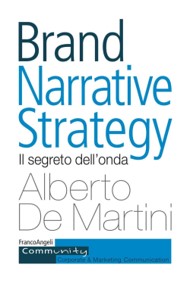
« A brand believes in certain values, confirmed by its myths, places itself in a relationship of specific empathy with a defined universe of people, and aspires to pursue positive change in their lives, to do so it uses tools such as products, services, and communication, to achieve which it conceives and implements appropriate organizational and production processes»

« The traditional path that leads consumers to purchase a brand (aware, appeal, ask, act) must take into account a fifth step, that of advocacy (personal and social)».
